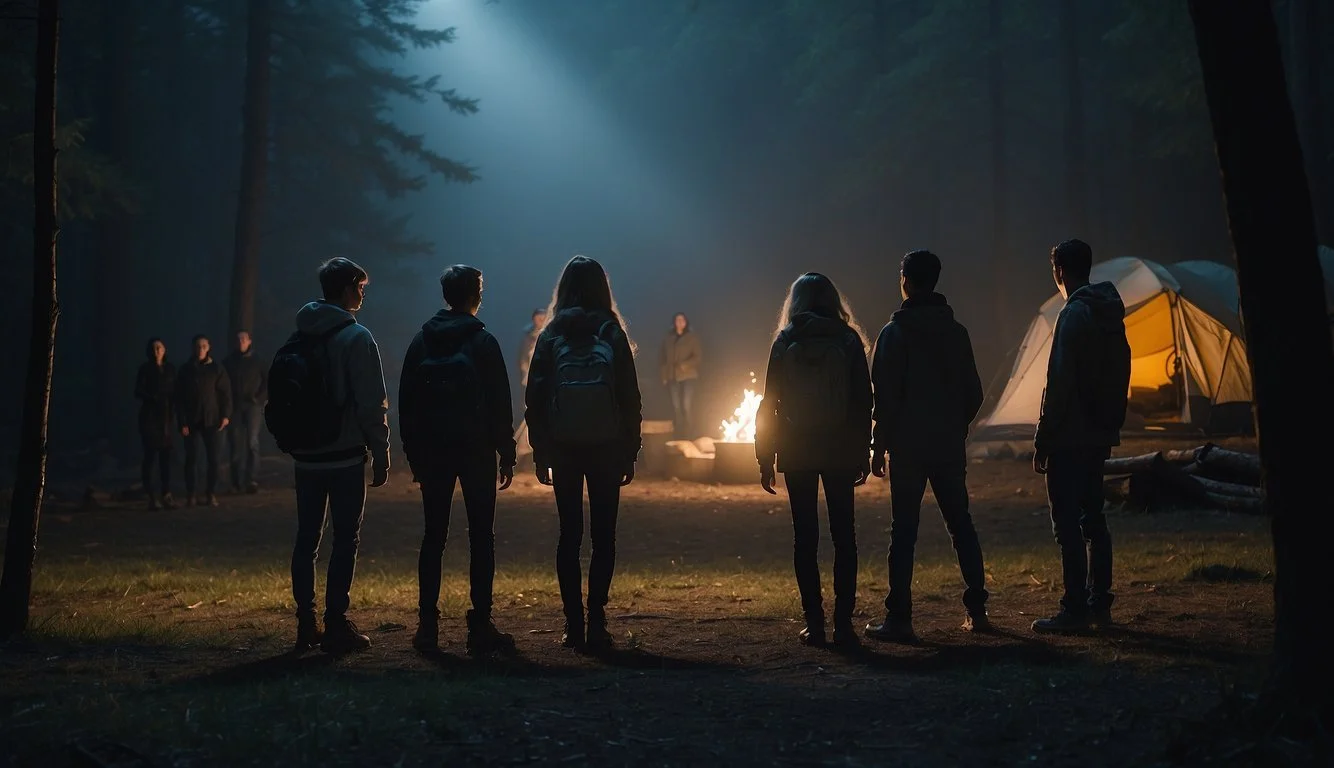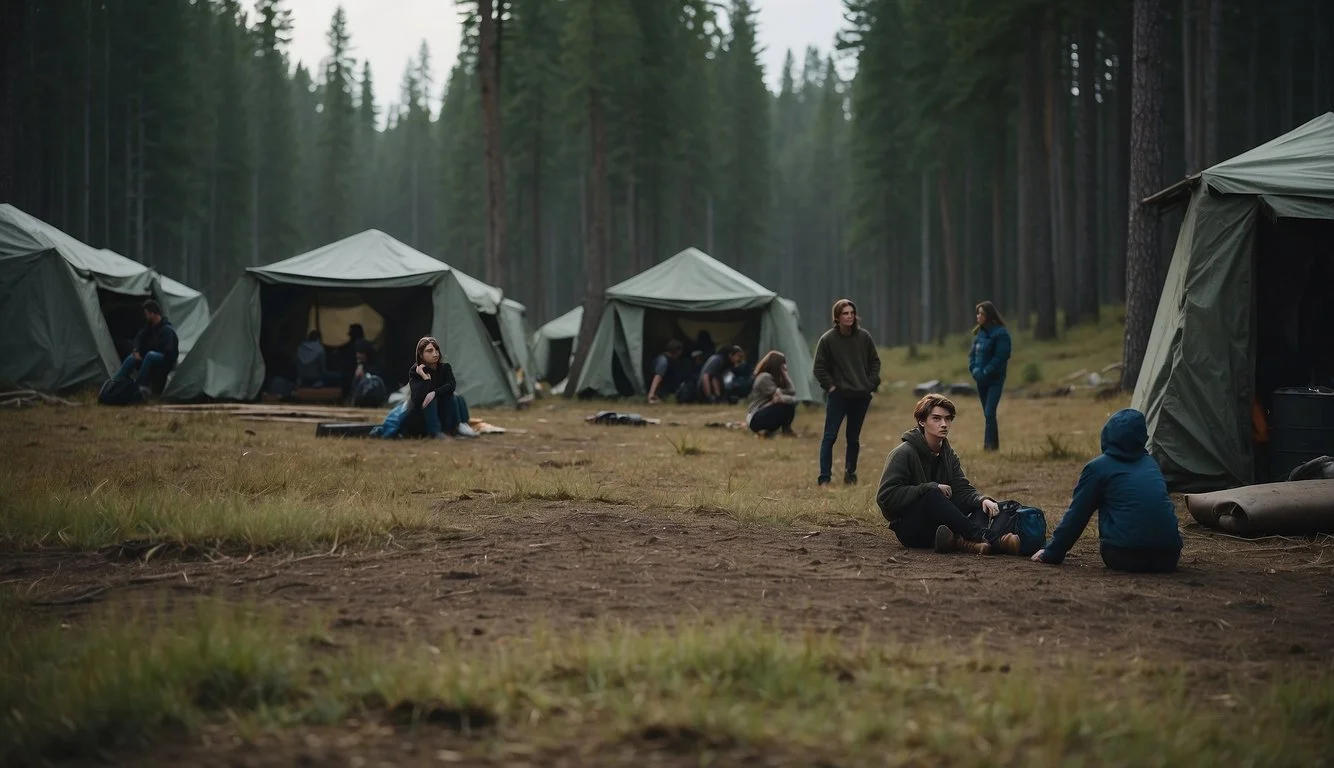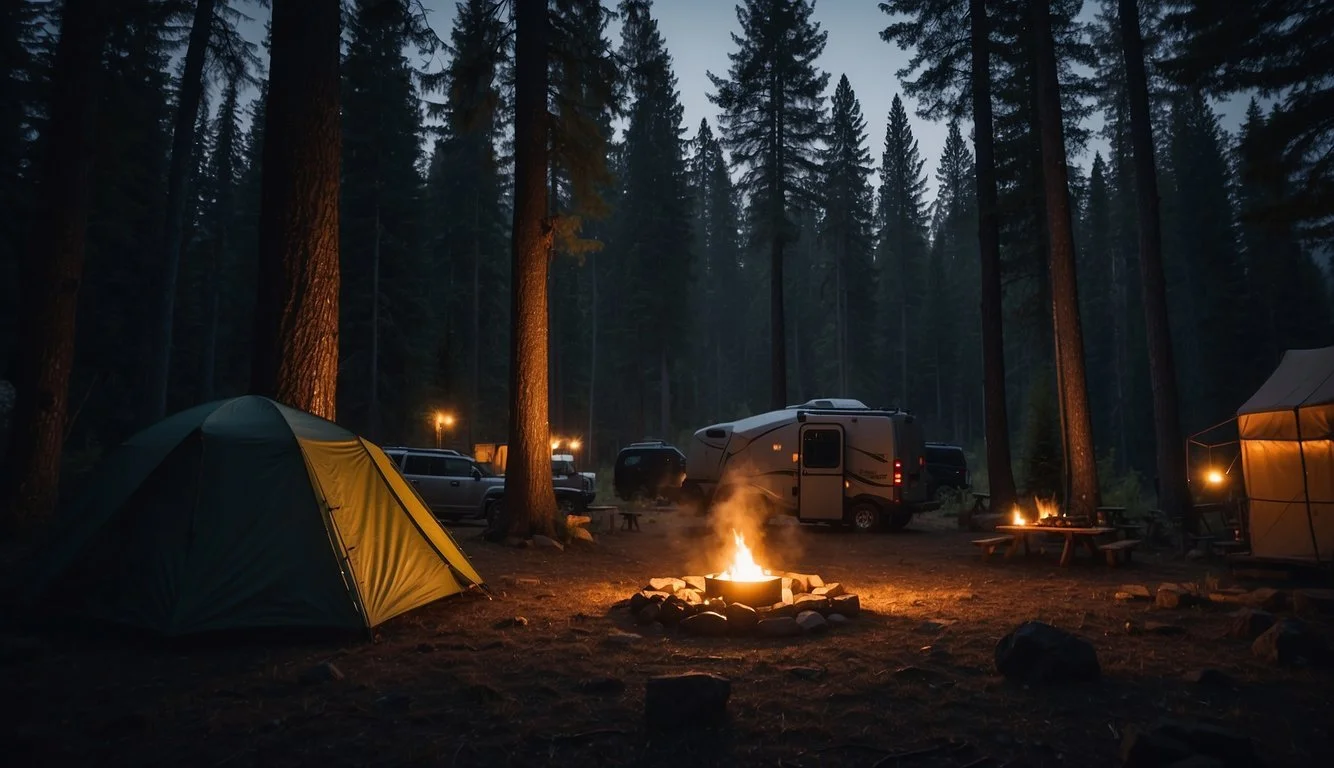Documentary Review: Hell Camp: Teen Nightmare (2023)
A Grueling Journey Through Troubled Youth
The documentary "Hell Camp: Teen Nightmare" (2023) offers a gripping exploration of wilderness therapy camps designed for troubled teens in the United States. Directed by Liza Williams, this film pulls back the curtain on the harsh conditions and severe disciplinary measures employed at these camps. The documentary presents a stark portrayal of the dangers and ethical concerns associated with such programs, emphasizing their potentially harmful effects on the adolescents involved.
At its core, the film raises important questions about the efficacy and morality of wilderness therapy. Viewers are introduced to the tragic story of Kristen Chase, a 16-year-old girl who succumbed to heatstroke during one of the camp’s grueling hikes, serving as a poignant example of the extreme risks these programs can pose. This incident becomes a focal point for examining the broader consequences of an unregulated industry.
Challenging but essential to watch, "Hell Camp: Teen Nightmare" provides families and individuals with crucial insights into the potential pitfalls of these controversial camps. The documentary's strong narrative and candid interviews compel the audience to rethink the practices and intentions behind wilderness therapy, making it a significant film for anyone concerned with the well-being of at-risk youth.
Documentary Overview
"Hell Camp: Teen Nightmare" (2023) is a gripping documentary directed by Liza Williams. It brings light to the dark reality of "wilderness therapy" camps and explores the severe, often dangerous measures employed on troubled teens.
Synopsis
"Hell Camp: Teen Nightmare" traces the experiences of out-of-control teenagers sent to a harsh therapy camp in the Utah desert. The documentary spotlights the brutal conditions and the extreme methods used by the staff. Tragically, it highlights the story of Kristen Chase, a 16-year-old girl who died of heatstroke during one of the camp's intense hikes. Through interviews and archival footage, viewers gain insight into the harrowing events these teens endured.
Context of 'Hell Camp'
Set in the Utah desert, "Hell Camp" serves as a reflective window into the controversial "wilderness therapy" programs widespread in America. These programs often targeted teenagers considered troublesome by their families. The film underscores the psychological and physical abuse disguised as therapy. The Challenger program, under intense scrutiny following Kristen Chase's death, symbolizes the widespread failings of such camps. Contextually, the documentary situates itself in the broader discussion about the ethics and effectiveness of extreme behavioral correction programs.
Film Structure
The documentary is succinctly structured into a one-hour-and-thirty-minute narrative. It utilizes a blend of personal testimonies, expert interviews, and archival materials to construct its story. Despite its relatively short runtime, the film is densely packed with impactful information. The pacing allows for a clear progression from the introduction of the camp's harsh realities to the tragic consequences of its practices. Each segment is carefully crafted to maintain engagement while providing a comprehensive examination of the issues at hand.
Production Insights
Hell Camp: Teen Nightmare (2023) reveals the harsh realities of teen rehabilitation camps through specific stylistic choices. This section delves into key aspects of its production, highlighting the director's vision, cinematography, editing, and sound and music.
Director's Vision
Liza Williams helmed the documentary, aiming to uncover the brutal conditions of these camps. Her intent was to shed light on the physical and emotional trauma inflicted on teens. Williams focused on intimate interviews and raw footage to evoke empathy and outrage. This choice helped portray the severity of the camps’ practices, emphasizing real stories and first-hand accounts. Williams' approach was both investigative and empathetic, aiming to spark conversation and change.
Cinematography
The cinematography played a crucial role in enhancing the film's emotional impact. Shots of desolate desert landscapes underscored the isolation and harsh conditions teens faced. Close-up interviews captured the anguish and resilience of survivors. Cinematographer Jana Marsh used natural lighting to retain authenticity, avoiding overly polished visuals. The stark contrast between the camp's environment and survivors' homes visually reinforced the brutality of their experiences. These choices contributed to the film's stark and somber tone.
Editing
Editing in Hell Camp: Teen Nightmare was meticulously executed to maintain narrative flow and emotional intensity. Short, poignant clips of testimonials were interspersed with archival footage, ensuring viewers grasped the historical context and ongoing impact. Editor Mark Reynolds balanced the film’s pacing, integrating distressing accounts without overwhelming the audience. He utilized cross-cutting techniques to juxtapose past and present, enhancing the narrative’s depth. This approach effectively conveyed the enduring scars left by the camps.
Sound and Music
Sound design and music in the documentary significantly amplified its emotional weight. The use of ambient sounds from the desert, such as the wind and rustling leaves, created an immersive experience. Composer Emily Rogerson’s score was minimalistic yet haunting, often featuring somber strings and piano. Sound effects like heavy breathing during intense scenes escalated tension. These elements worked cohesively to underscore the harrowing experiences of the subjects and the oppressive atmosphere of the camps.
Themes and Analysis
Hell Camp: Teen Nightmare presents various important themes, focusing especially on the struggles faced by adolescents, the intense pressure from parents, and the broader cultural context of the late 1980s and early 1990s.
Adolescent Struggle
The documentary highlights the physical, emotional, and psychological challenges faced by teenagers at the camp. These young individuals are often pushed beyond their limits, participating in harsh survival activities.
Kristen Chase's tragic death due to heatstroke underscores the extreme conditions. The film emphasizes how these adolescents are often neglected emotionally, with their voices and concerns rarely being heard or addressed.
Parental Pressure
Parents, fearing for their children's future due to rising drug problems and delinquency, often resorted to sending them to wilderness camps like the Challenger. The hope was to reform these teenagers through tough love and discipline.
The film reveals the desperation and guilt felt by parents, believing stringent measures were needed to protect their children. This intense pressure sometimes led to unintended harmful consequences.
Cultural Reflections
Hell Camp: Teen Nightmare sheds light on the societal norms and anxieties of the late '80s and early '90s. During this period, there was a heightened fear of youth corruption, with a strong belief in radical intervention methods.
The documentary reflects the broader cultural context, illustrating how wilderness camps became a controversial solution amidst the moral panic of the times. The film uses personal stories to offer a poignant critique of these practices.
Reception
"Hell Camp: Teen Nightmare" has sparked varied reactions, with critics noting its critical stance on wilderness therapy and audience reactions ranging from praise to discomfort. The documentary also gained recognition in the awards circuit.
Critical Response
Critics widely acknowledge "Hell Camp: Teen Nightmare" for its strong stance and compelling storytelling. Rotten Tomatoes features glowing reviews, with Dave S. awarding it 5 out of 5 stars. Despite being difficult to watch, many appreciate its insightful commentary.
Common Sense Media notes that the documentary asks thought-provoking questions for families with teens. It also highlights the harsh realities of these camps, contributing to a broader debate about their ethical implications.
Audience Reception
The audience's reception has been mixed. Viewers are engaged by the gripping narrative and the exposure of serious issues within wilderness therapy programs. The vivid portrayal of Kristen Chase's tragic death elicited strong emotional responses.
Some viewers find the 1 hour 30-minute runtime too short to fully explore all aspects. The film's tough subject matter is both a draw and a deterrent, making it a simultaneously praised and challenging watch.
Awards and Acknowledgments
"Hell Camp: Teen Nightmare" has received notable awards for its impactful storytelling and direction. It has been recognized for raising awareness on sensitive issues, winning accolades at various film festivals.
The documentary's director, Liza, has been praised for her bravery in tackling such a controversial topic. This recognition underscores the film's contribution to discussions on reforming wilderness therapy programs.
Impact and Discussion
The documentary Hell Camp: Teen Nightmare has sparked significant conversations and changes across multiple domains, including policy reform and public awareness.
Influence on Policy
Hell Camp: Teen Nightmare has brought considerable attention to the practices of teen rehabilitation camps. Following its release, calls for policy reform have intensified.
Legislators have proposed stricter regulations and standards for these camps. Issues highlighted in the film, such as corporal punishment and the high costs, are now central to these discussions. Policy changes are being demanded to ensure teenagers are treated humanely and fairly.
The death of Kristen Chase, a tragic focal point in the documentary, underscored the urgent need for governmental oversight. This has already led to the introduction of new safety guidelines and the closure of some problematic facilities.
Public Discourse
The documentary has ignited widespread public debate about the ethics and efficacy of these camps. Viewers are actively discussing whether such extreme measures are justified for addressing teenage behavioral issues.
Social media platforms are buzzing with personal anecdotes and opinions. Individuals are sharing their experiences, both positive and negative. This has helped create a more nuanced understanding of the varied impacts of these camps.
Public forums and discussion panels have also emerged. Experts in psychology, former camp attendees, and the general public are brought together to discuss these important issues. This dialogue aims to foster better solutions and alternatives to punitive rehabilitation methods.
Cinematic Impact
From a cinematic standpoint, Hell Camp: Teen Nightmare has made a substantial mark. The documentary's gripping narrative and clear point of view have been pivotal in its success.
Critics have praised its raw and unflinching portrayal of the subject matter. Its balance of emotional storytelling with factual reporting has set a new standard for documentaries in the true-crime genre.
The film’s concise, 1-hour-30-minute runtime has also been noted for contributing to its impactfulness. Despite its brevity, it managed to cover complex issues comprehensively, which is often a challenge in such documentaries.
By raising societal awareness and influencing policy changes, Hell Camp: Teen Nightmare has left a lasting impression on its viewers and beyond.
Comparative Analysis
"Hell Camp: Teen Nightmare" stands out not only in its genre but also in how it stacks up against other documentaries. Its unique perspective on "wilderness therapy" sets it apart and invites comparisons across both content and genre styles.
Similar Documentaries
"Hell Camp: Teen Nightmare" shares thematic elements with documentaries like The Camp and Breaking the Silence. These films also expose harsh realities faced by children in rehabilitation or correctional settings.
The Camp focuses on military-style boot camps, showing the impact of extreme discipline on troubled teens. Both documentaries aim to reveal the underlying issues and societal implications of such programs. Viewers get to see how different environments, though similar in their punitive approach, uniquely affect youth.
Breaking the Silence explores mental health treatment facilities for adolescents. Unlike Hell Camp, this documentary places greater emphasis on psychological abuse rather than physical challenges. Still, both films highlight the vulnerabilities of young people under institutional care.
Genre Comparison
In terms of genre, Hell Camp: Teen Nightmare combines elements of true-crime and investigative journalism with horror and thriller nuances. This blend sets it apart from standard investigative documentaries, which typically focus strictly on fact-finding.
True-crime documentaries like Making a Murderer or The Keepers delve deeper into investigative journalism, spending more time on courtroom drama and factual evidence. The horror elements in Hell Camp—through intense outdoor challenges and high-stakes scenarios—create a unique narrative tension.
While traditional horror films often focus on fictitious terror, Hell Camp harnesses real-life fears, enhancing the genre's emotional gravity. This documentary’s hybrid genre approach broadens its appeal, attracting both true-crime enthusiasts and horror fans.
Final Thoughts
Hell Camp: Teen Nightmare illuminates the harsh realities of "wilderness therapy" camps. Directed by Liza Williams, the film exposes the intense conditions faced by teens.
The documentary addresses the tragic case of Kristen Chase, a 16-year-old who died of heatstroke. Her story, while heart-wrenching, highlights the dangers of these programs.
The reviews for the film are mixed but generally positive. It's rated 5 out of 5 stars by some reviewers and deemed gripping, though difficult to watch.
Several critics note the film's strong point of view. It raises critical questions that resonate with families dealing with troubled teens. Despite its short runtime of 1 hour and 30 minutes, it effectively covers the essential aspects.
The visual presentation is stark and unflinching. It employs a mix of interviews and archival footage to paint a vivid picture of the camps' brutal practices.
For viewers interested in social issues and true-crime narratives, this documentary is a vital watch. It serves as both an exposé and a call for reform.
While it doesn't explore every nuance due to time constraints, Hell Camp: Teen Nightmare achieves its goal of raising awareness and sparking dialogue.





